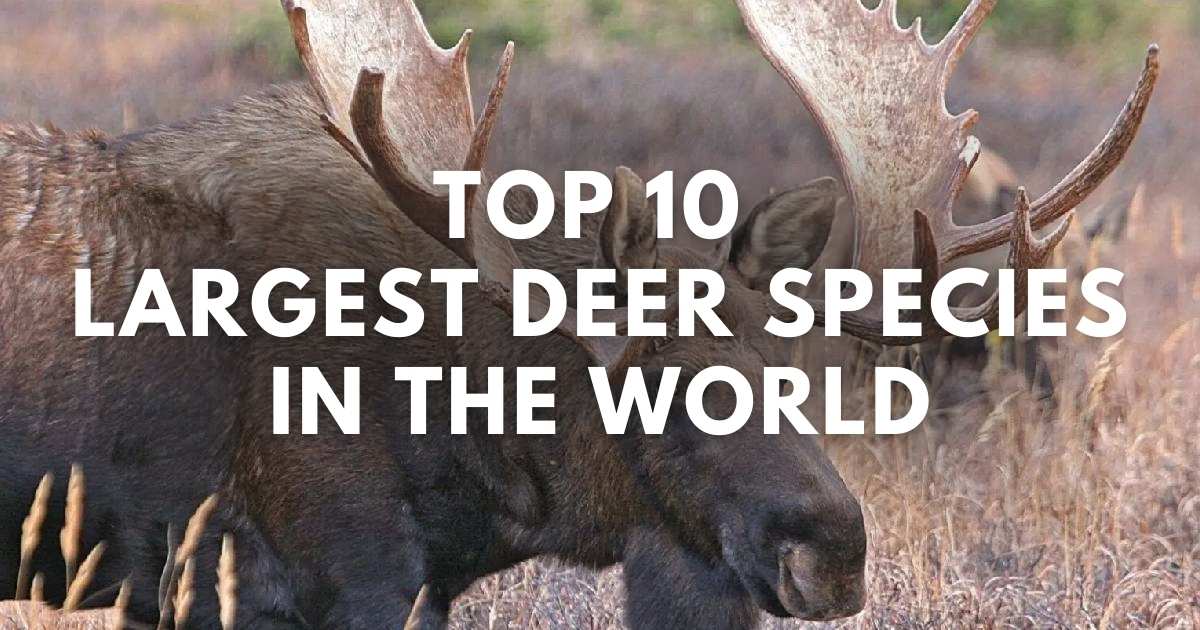The deer genus is one of the biggest and most diverse groups of mammals. This group includes several species that have evolved to live in an array of locations around the world. People have been intrigued by the largest deer species, which have stood tall and have had extraordinary antlers for centuries. These giants, ranging from the pompous moose to the delicate red deer, standout out in their natural domain. The world’s 10 largest deer species, their dimensions, height, and distinctive features are reviewed in this article.
10. Spotted Deer (Axis axis)
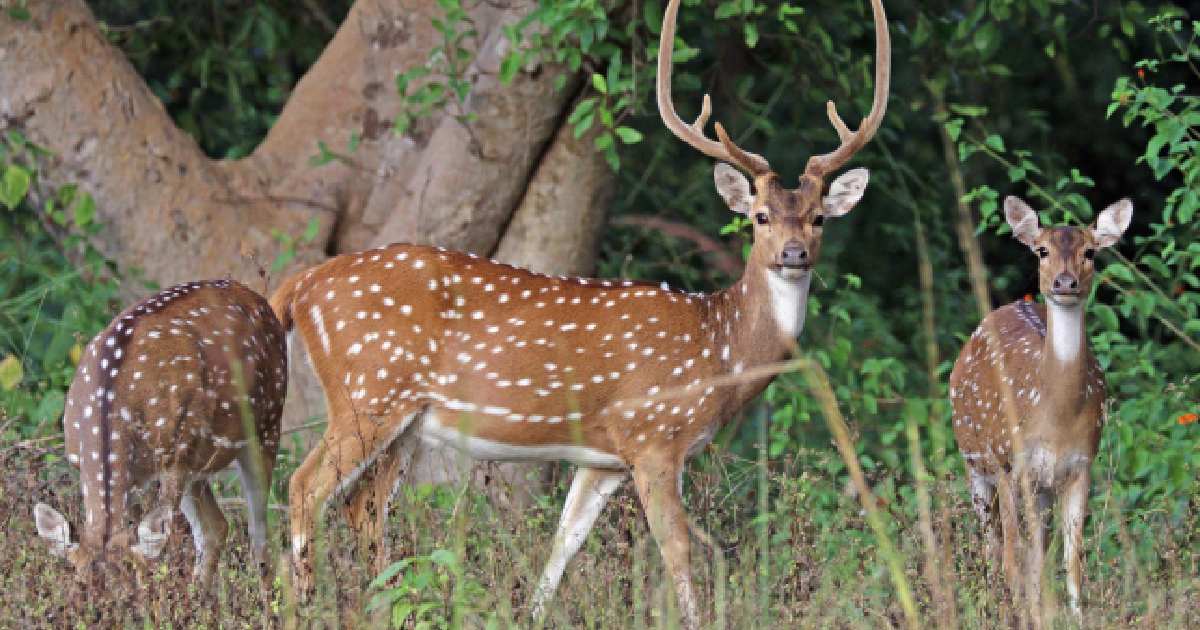
- Size: Up to 3.3 feet tall at the shoulder
- Height: Up to 5.6 feet in length
- Key Features: Distinctive white spots, slender build, found in the Indian subcontinent
Indian Spotted Deer, frequently referred to as Chital or Axis Deer, are medium to large. Deer males have exquisite, growing antlers and white patches across their golden-brown coats. However, females are shorter and do not have antlers, yet their spotted style provides outstanding camouflage in woodlands.
As sociable creatures, spotted deer typically live in communities identified as herds. The environment utilizes them as forage for tigers and leopards. This fragile deer kind’s attractive shape and striking patterns make it one of the most easily recognized deer species.
9. Mule Deer (Odocoileus hemionus)
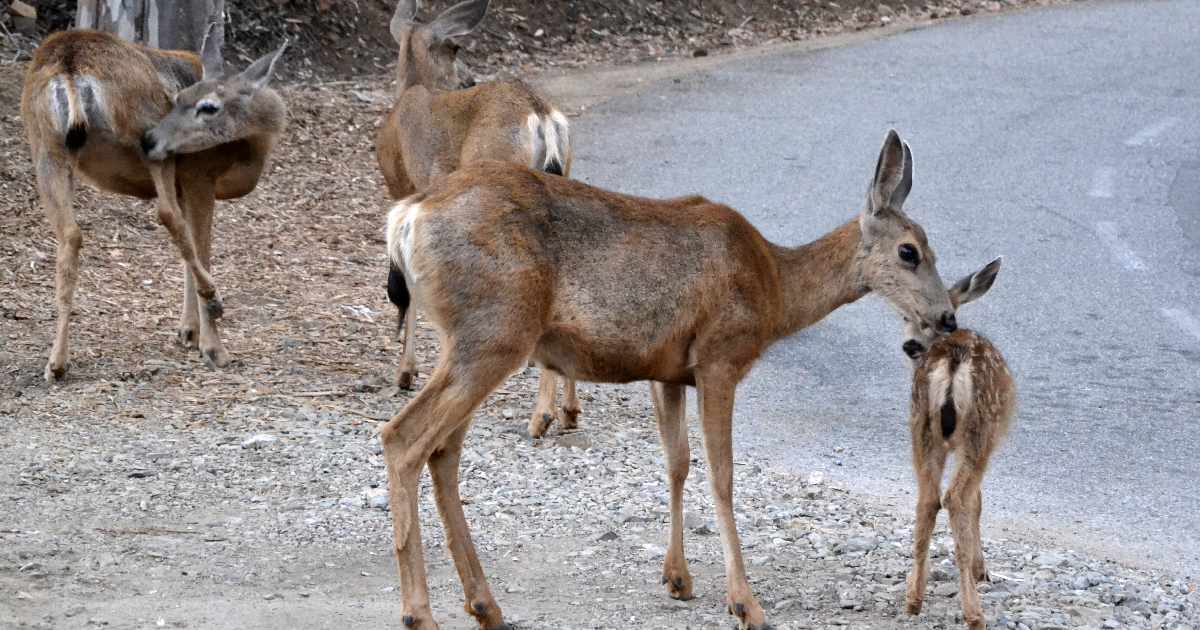
- Size: Up to 330 pounds (150 kg)
- Height: Up to 3.5 feet (1.1 meters) at the shoulder
- Key Features: Large ears, forked antlers, white rump patch
The Mule Deer, identified by its gigantic ears, is often seen all over western North America. The arid regions to highlands are inhabited to the incredibly flexible deer. The forked horns of mule deer discern themselves from another close contingent, the white-tailed deer.
Mule deer’s “stotting” motions allow them to cross formidable terrain. Female deer are shorter than bucks and have astonishing antlers. Despite their adaptability, protecting mule deer herds remains essential due to habitat loss and human incursions.
8. Thorold’s Deer (Cervus albirostris)
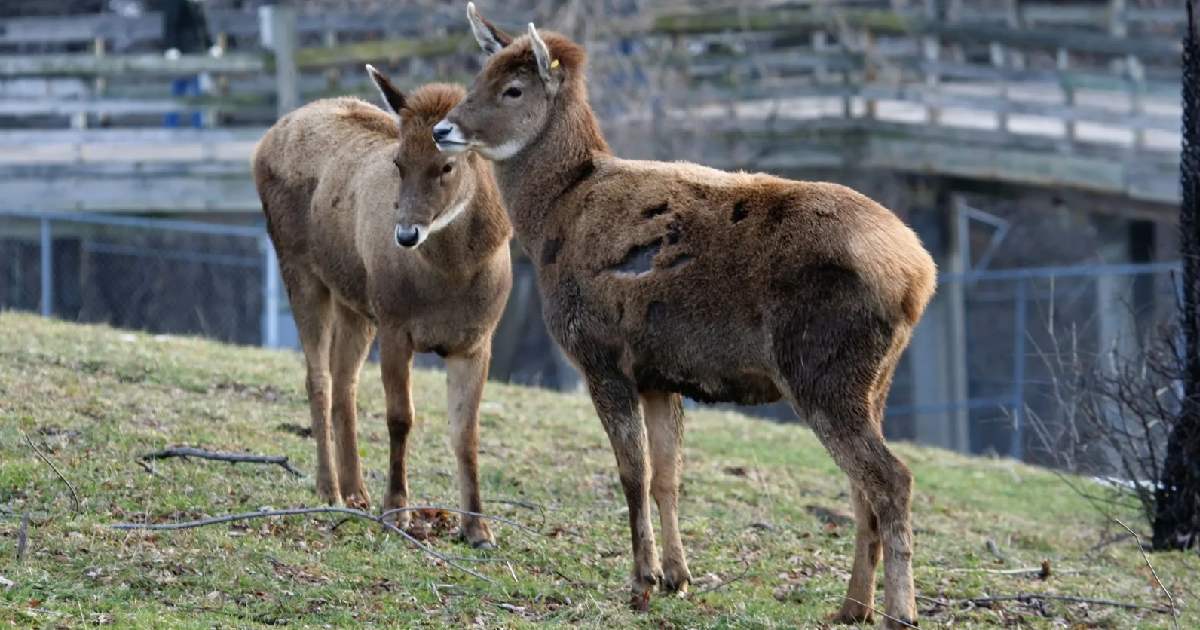
- Size: Up to 500 pounds (225 kg)
- Height: Up to 4.3 feet (1.3 meters) at the shoulder
- Key Features: White throat patch, thick winter coat, long tail
White-lipped deer, or Thorold’s Deer, are frequently found in high-altitude Tibetan Plateau areas. The animal’s thick winter coat helps it endure steep dwellings. They set out among other deer species with their extended tail and white throat patches.
Thorold’s Deer is a friendly, small-herd animal with exceptional flexibility and tenacity in tough habitats. As a consequence of habitat loss and hunting, it has become a threatened species. Protecting this rare mountain deer and its natural environment requires attention.
7. White-tailed Deer (Odocoileus virginianus)
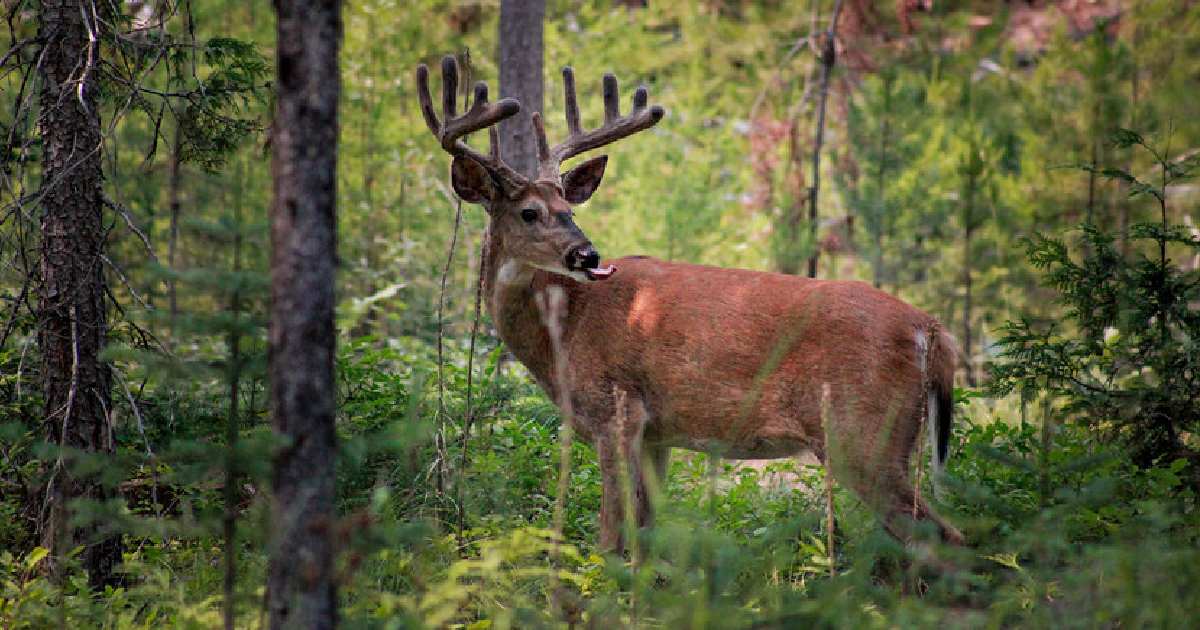
- Size: Up to 300 pounds (136 kg)
- Height: Up to 3.9 feet (1.2 meters) at the shoulder
- Key Features: White underside of the tail, versatile habitat preferences, highly adaptable
The White-tailed Deer is among North America’s most prevalent kinds of deer. It can be readily recognized by the white underside of its tail, the sign it creates informing people. This adaptable deer species is the most populous, flourishing in jungles, farms, and cities.
They can run 30 mph, and these deer are watchful and swift. Bucks grow and lose their horns yearly to show power during mating season. Managing herds of white-tailed deer are required to combat habitat degradation and infection amid their size.
6. Barasingha (Rucervus duvaucelii)
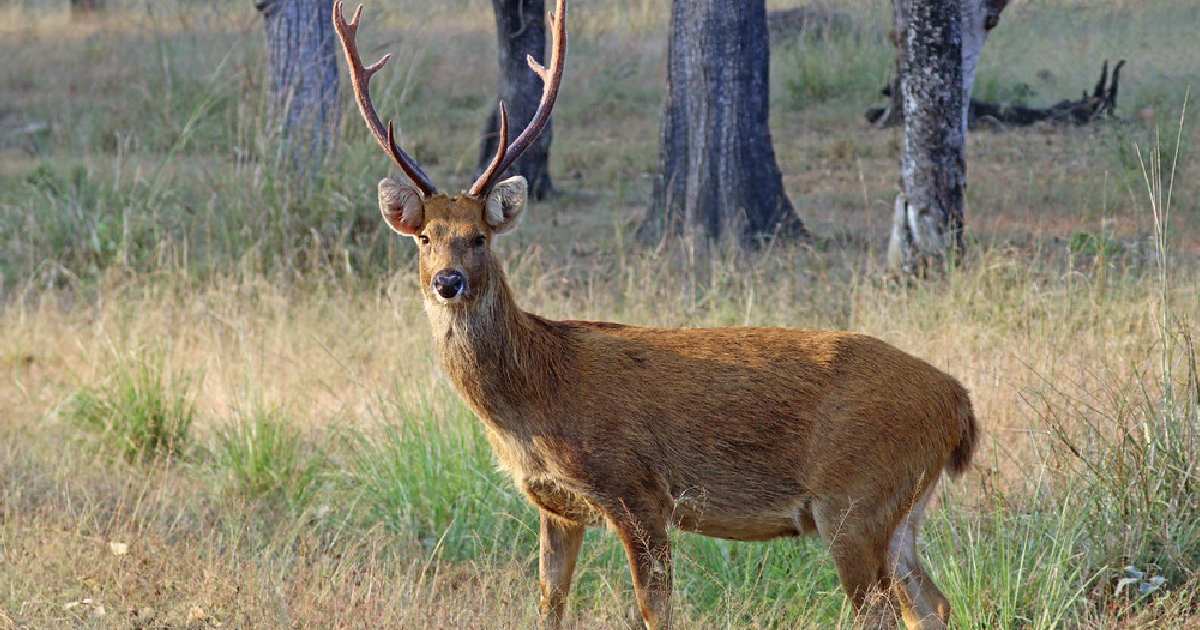
- Size: Up to 570 pounds (260 kg)
- Height: Up to 4 feet (1.2 meters) at the shoulder
- Key Features: Swamp habitat, multi-tined antlers, endangered species
Swamp deer, or barasingha, reside in India and Nepal’s marshlands. Dubbed as the “twelve-tined deer,” this animal boasts incredible antlers with as many as 12 grooves. Barasinghas are exceptionally good at living in damp places therefore one can often see them advancing through waters to find food.
Animal poaching and habitat destruction have decreased their availability, rendering them endangered. For its continued existence, the barasingha needs rehabilitation and protection. These creatures are essential for keeping ecological equilibrium within the swamps.
5. Reindeer (Rangifer tarandus)
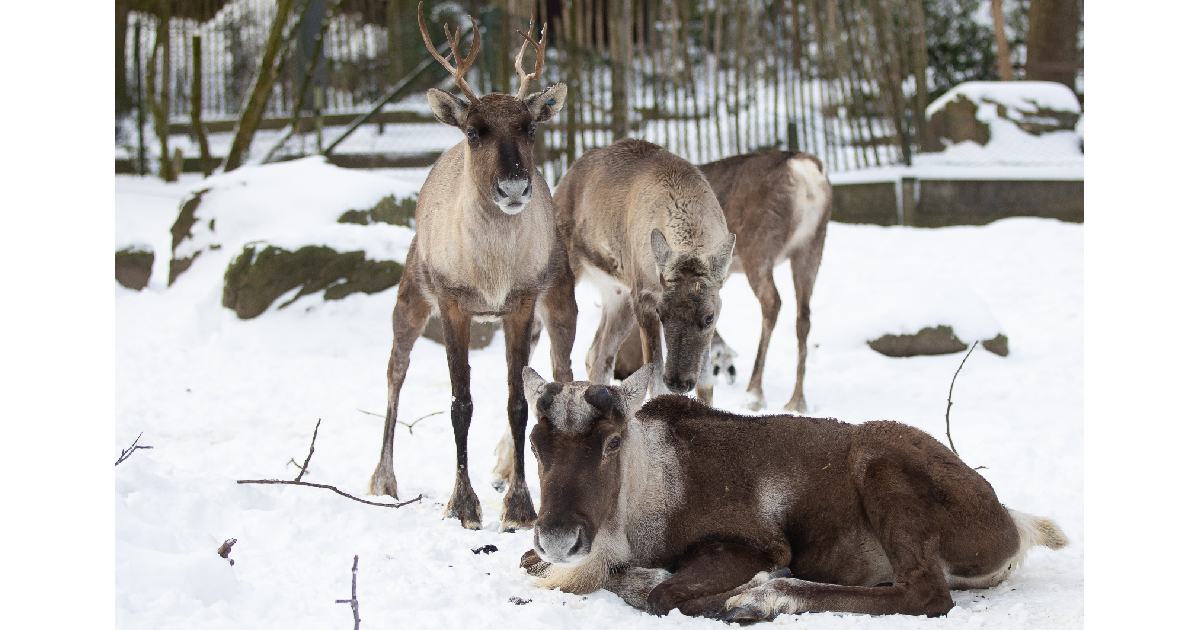
- Size: Up to 600 pounds (272 kg)
- Height: Up to 4.3 feet (1.3 meters) at the shoulder
- Key Features: Both sexes have antlers, Arctic and subarctic distribution, migratory behavior
The reindeer also called the wild reindeer in Europe or caribou in North America, represents one of the largest Arctic and subarctic deer species. Male and female reindeer develop antlers for hunting through the snow, which makes them peculiar. The migration is widespread in the pursuit of resources and mating environments.
In indigenous Arctic societies and economic status, reindeer are fundamental. The industrial sector expansion, habitat destruction, and global warming always imperil them. For survival, reindeer herds must maintain their migration routes and native habitats.
4. Red Deer (Cervus elaphus)
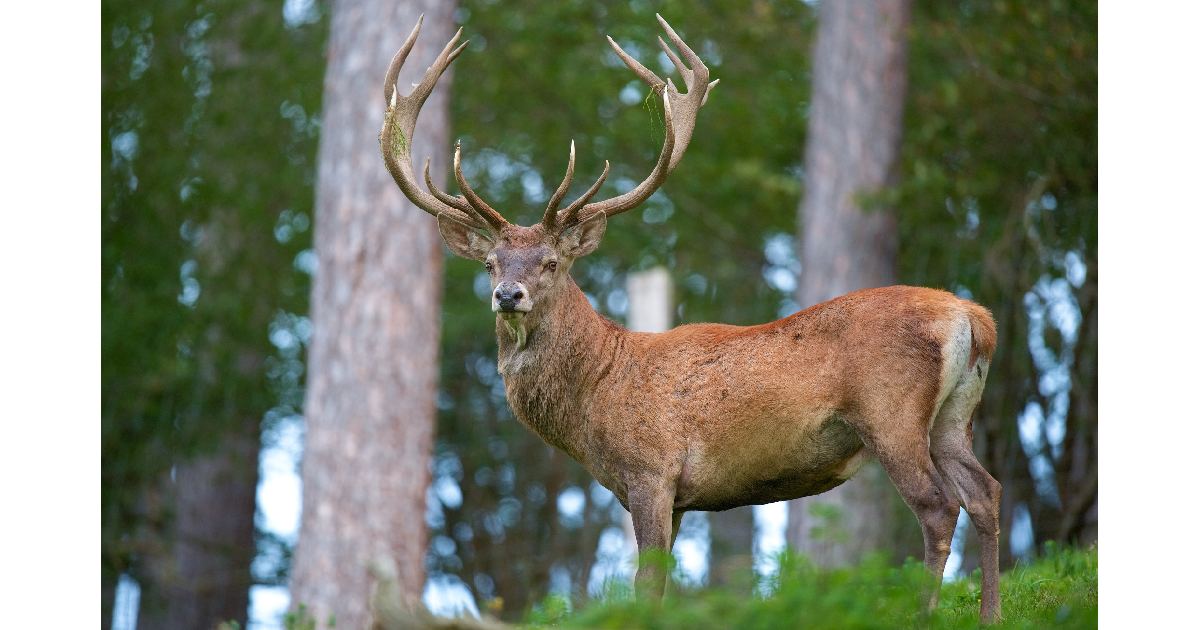
- Size: Up to 700 pounds (318 kg)
- Height: Up to 4.5 feet (1.4 meters) at the shoulder
- Key Features: Large branched antlers, widespread distribution, vocal rutting behavior
The Red Deer, among the largest and widely distributed deer species, inhabits Europe, Asia, and North Africa. In numerous traditions, red deer symbolizes the wilderness due to their massive, expanding antlers and strong, resonating calls during scratch season. Red deer populations differ, with the Caspian red deer and Corsican red deer subspecies at risk and urgently needing protection.
These deer are adept in thick forests and expansive fields. During mating season, male deer, or stags, showcase their remarkable antlers. Despite their ability to thrive, operations are necessary to protect red deer against habitat collapse and violence.
3. Sambar (Rusa unicolor)
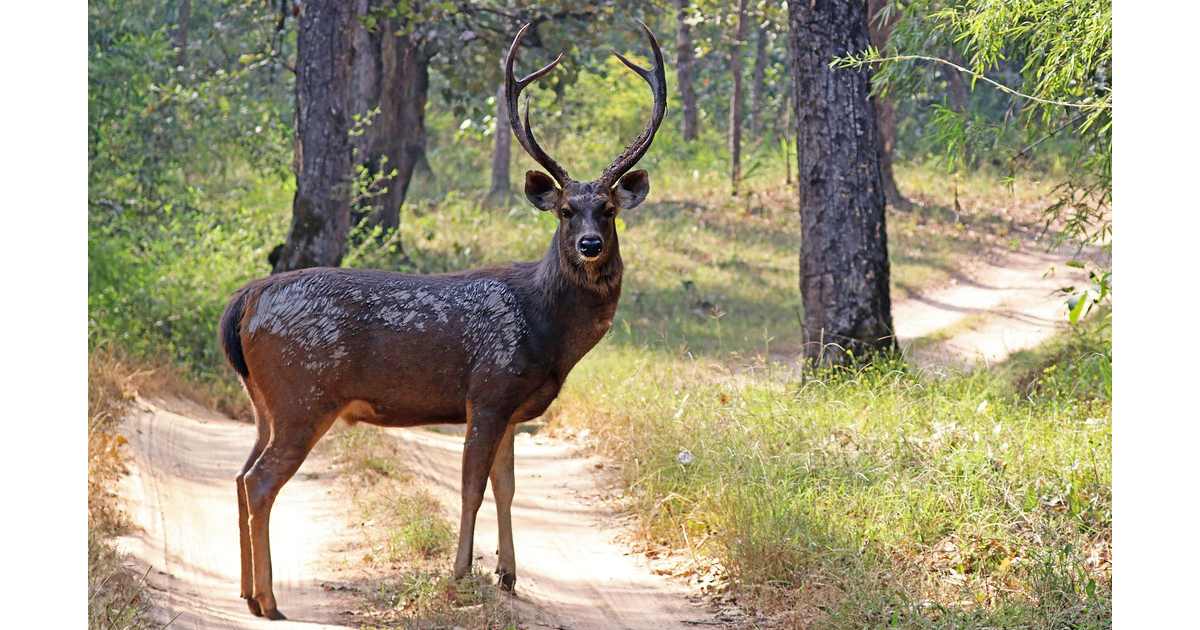
- Size: Up to 1,200 pounds (545 kg)
- Height: Up to 5.6 feet (1.7 meters) at the shoulder
- Key Features: Large size, coarse fur, nocturnal habits
The Sambar Deer represents one of the most prominent deer species in India, Southeast Asia, and China. In woodlands, the sambar is fierce at 5.6 feet at shoulder height and 1,200 pounds. This nocturnal, in-nature species consumes a variety of crops and has rough, black fur.
Male sambar deer live separately except during the breeding season. Their big stature and elusiveness make them a preferred target for hunters, causing their loss in many places. Their survival relies upon habitat conservation and mitigation of human-wildlife conflict.
2. Elk (Cervus canadensis)
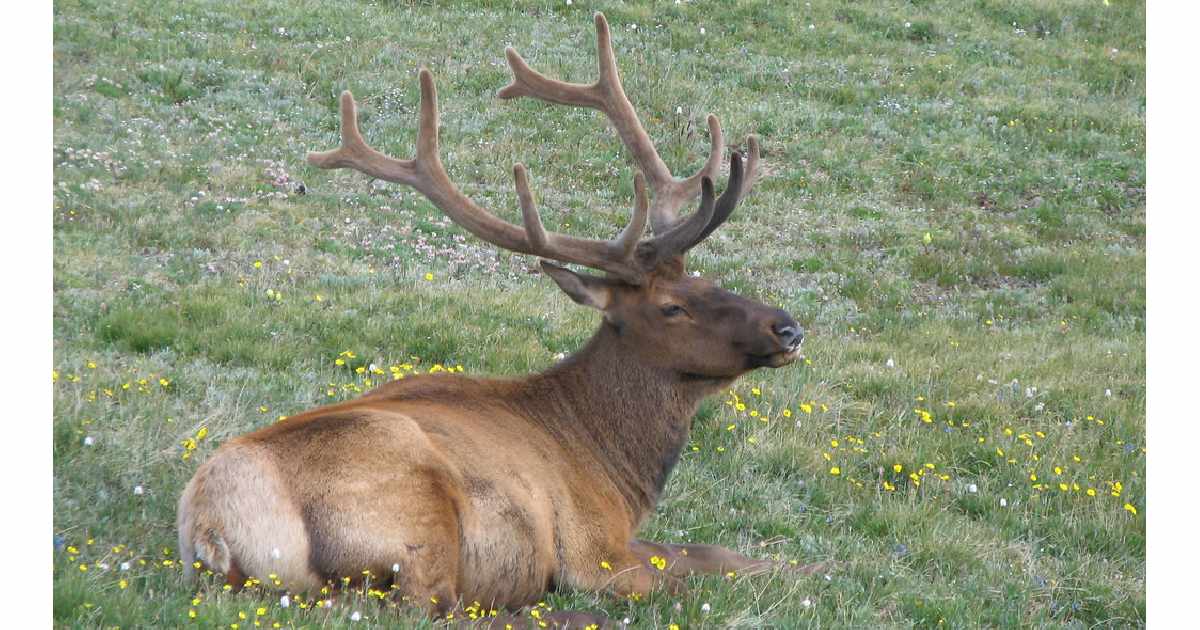
- Size: Up to 1,100 pounds (500 kg)
- Height: Up to 5 feet (1.5 meters) at the shoulder
- Key Features: Large, sweeping antlers, herd behavior, vocal bugling calls
In North America and Asia, the wapiti (elk) has become one of the most massive deer species. Elk, which measure up to 1,100 pounds and grow up to 5 feet tall, have massive, arching antlers and unique bugling sounds during mating. During the breeding period, elk form significant herds.
Excellent management and preservation have kept North American elk populations balanced. They influence vegetation patterns and serve as targets for huge carnivores in their native habitats. However, habitat loss and shooting jeopardize Asian elk, demanding coordinated security.
1. Moose (Alces alces)
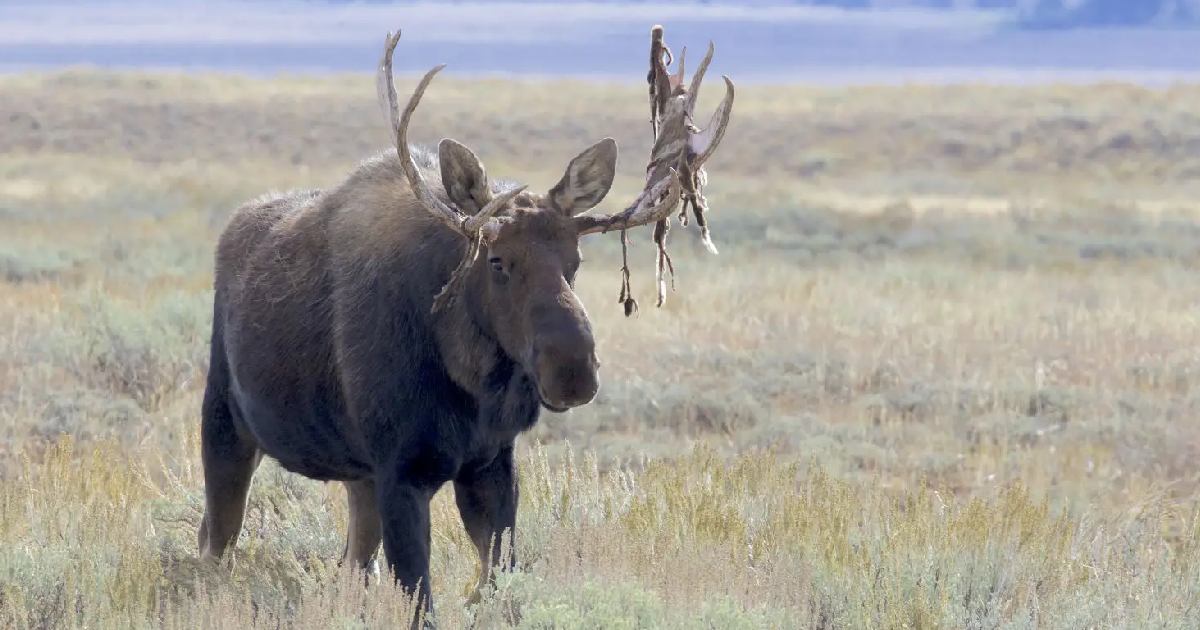
- Size: Up to 1,800 pounds (816 kg)
- Height: Up to 6.9 feet (2.1 meters) at the shoulder
- Key Features: Largest species of deer, long legs, distinctive paddle-shaped antlers
Moose, the world’s largest deer, can weigh up to 1,800 kilograms and stand 6.9 feet long. Their long legs allow moose to walk across deep snow blankets and dense forests in northern North America, Europe, and Asia. Their paddle-shaped horns extend up to 6 feet, making them a wilderness symbol.
Moose are reclusive except during breeding season and can navigate over huge distances of water to search for sustenance or partners. Global warming, declines in habitat, and brain worms jeopardize moose data regardless of their large stature. To protect them, efforts must be made to preserve their natural environments and control human-moose contact.
Conclusion
The largest deer species in the world are remarkable for their size and unique adaptations and roles in their ecosystems. From the moose’s towering presence in the northern forests to the red deer’s majestic antlers across Europe and Asia, these species represent the diversity and resilience of the deer family. While some populations thrive, others are threatened and require conservation efforts to protect their habitats and ensure survival. As we continue to study and admire these magnificent animals, we must remember their role in the natural world and our responsibility to preserve their legacy for future generations.
Frequently Asked Questions (FAQs)
What is the biggest breed of deer?
The biggest breed of deer is the Moose (Alces alces). It is the largest species of deer in the world, with males reaching up to 1,800 pounds and standing up to 6.9 feet at the shoulder. They are known for their long legs, which help them navigate deep snow, and impressive paddle-shaped antlers, which can span over 6 feet.
What is the largest deer to ever live?
The Irish Elk (Megaloceros giganteus) was the largest deer ever to live. Extinct for over 7,000 years, this giant deer stood around 7 feet at the shoulder and had massive antlers that could reach up to 12 feet wide. Despite its name, it was more closely related to modern fallow deer than elk or moose.
What is the largest and heaviest extant species of deer?
The largest and heaviest extant species of deer is the Moose (Alces alces). Adult male moose can weigh up to 1,800 pounds and stand as tall as 6.9 feet at the shoulder. Their sheer size, distinctive paddle-shaped antlers, and solitary nature make them unique among the deer family and a symbol of the northern wilderness.
What deer are bigger than whitetails?
Several deer species are larger than the white-tailed deer, including Elk, Moose, Red Deer, and Sambar Deer. Elk and moose are particularly large, with moose being the biggest. They significantly surpass whitetails in body size, height, and antler dimensions, making them appear more imposing.
What is the world record biggest deer?
The world record for the largest deer ever recorded is held by the Moose (Alces alces). The heaviest recorded moose weighed around 1,808 pounds and had an antler spread of 6.5 feet. Moose are the tallest and heaviest of all extant deer species, making them the true giants of the deer family.

